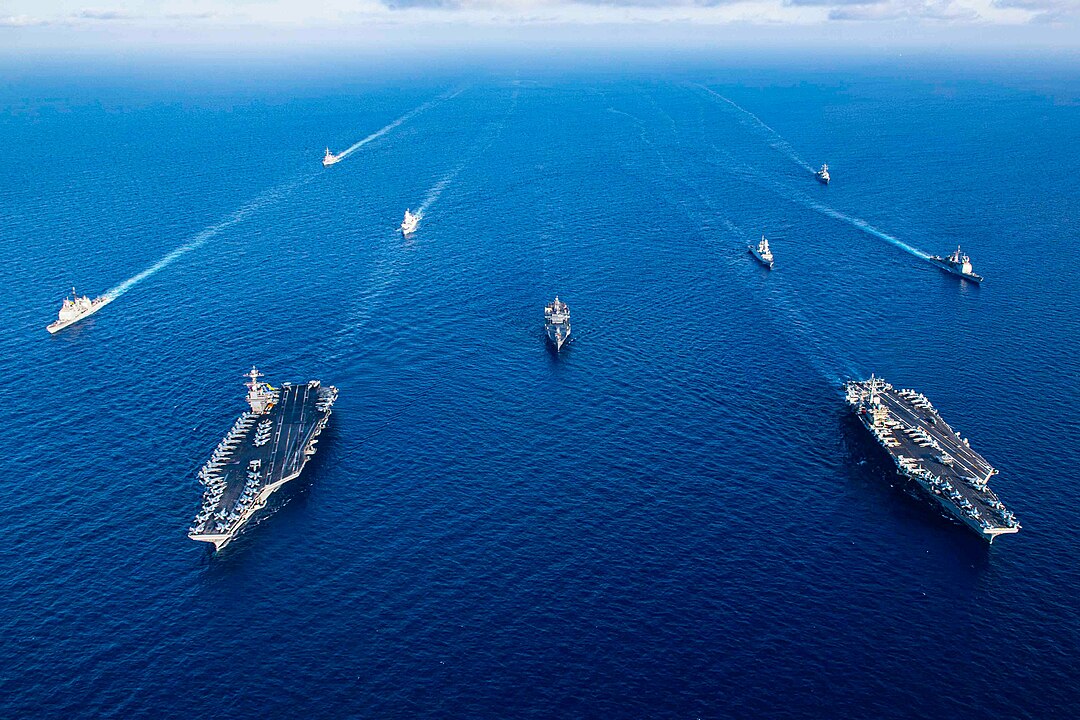
In the realm of naval engineering, the USS Gerald R. Ford stands as a testament to human ingenuity and a pinnacle of stability principles.

Dissecting the architectural and engineering marvel of modern U.S. Navy aircraft carriers, particularly the USS Gerald R. Ford, reveals a tapestry of design prowess and intricate calculation that allays any fears of capsizing despite the behemoth’s asymmetric superstructure.

Aircraft carriers, among the largest and most potent ships on the high seas, exude an air of invincibility, grounded not in sheer size but in the precision of their design.

The USS Gerald R. Ford, the U.S. Navy’s newest supercarrier, is no exception. At first glance, this leviathan with a knife-like hull and a towering superstructure might strike an observer as a prime candidate for instability. Yet, this could not be further from the truth.

The essence of the vessel’s stability lies in the well-calculated relationship between its center of buoyancy and the center of gravity. “The curve of the hull creates a ‘center of buoyancy’ that is located below the center of gravity of the ship,” an article published on July 26, 2023, explained.

This strategic positioning ensures that the force of water pushing up on the hull is more than the the force of gravity pulling the ship down, fostering a stabilizing moment that counters any inclination to tip over.

This stability is further augmented by the hull’s insane curvature, approximately 18 inches at the keel, which not only ensures that the weight of the ship is distributed evenly but also significantly decreases hull drag by creating a streamlined shape.

As a result, the carrier moves through the water with notable efficiency, defying the very visual cues that might suggest it would do otherwise.

Weight distribution plays a critical role in preserving equilibrium, especially when dealing with a full complement of fuel and ammunition.

Heavy components such as engines and aircraft are strategically placed near the center of gravity, ensuring the vessel remains well-balanced. Additionally, the ship’s weight is meticulously controlled to prevent being too top-heavy, a scenario that would increase the risk of capsizing in heavy seas.

The USS Gerald R. Ford, like its predecessors, incorporates a bevy of stabilizers, including bilge keels, fin stabilizers, and the rudder. These elements contribute to the ship’s steadfastness against rolling and yawing, particularly in tumultuous conditions.

The carrier is also equipped with systems like the bilge pump and damage control systems, which serve as safeguards against capsizing or sinking.

Aircraft carriers are fortified with steel, divided into watertight compartments to mitigate the risk of sinking should one be compromised.

“The aircraft carrier has a large number of stabilizers, which help to keep the ship from rolling in the waves,” the same July 26, 2023, article pointed out. Further enhancing stability, these systems have been refined over time, significantly reducing incidents and fatalities.

A deeper dive reveals that the perceived tapering of these ships is limited to the waterline, designed to minimize drag at the surface. Below the waterline, carriers possess a wide, flat bottom, securing an inherently stable platform.
